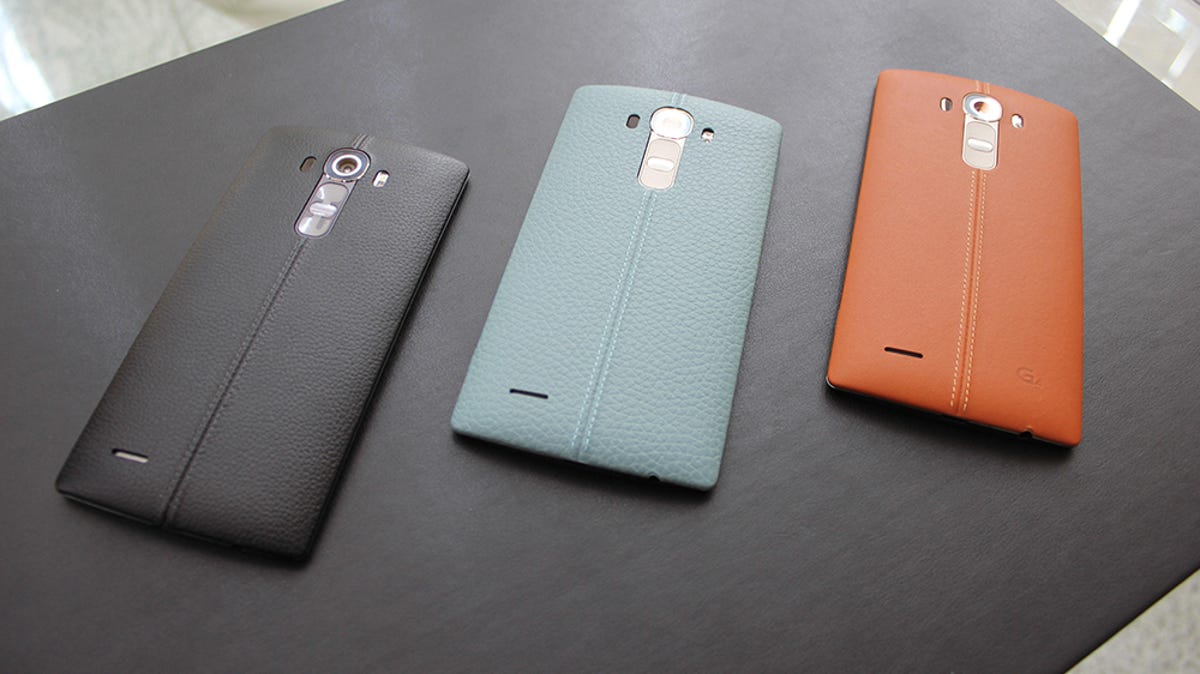
Roger Cheng/CNET
PYEONGTAEK, South Korea — Every few seconds, the front display and an internal component of LG’s upcoming G4 smartphone roll on to a conveyor belt. The gloved hands of an employee quickly snatch up the pieces, assemble them and place the completed work back on the green pathway.
As the work in progress moves down the line, another worker installs a SIM card and battery, while another places each phone in a little box to test the wireless signals. Further along the assembly line, you can hear a woman say “ahh” over and over again — a short video clip that plays once on each unit to ensure the audio and visual capabilities are up to snuff.


LG
For the most part, the employees — almost all women — work in pairs. It resembles that famous chocolate-wrapping scene with Lucy and Ethel in “I Love Lucy” — only these workers operate with machine-like efficiency. The plant, located an hour south of Seoul, has 25 assembly lines able to produce 3.5 million smartphones a month, making it the largest of LG’s five mobile-focused manufacturing facilities around the world.
“We tried a line with just men, but production fell by 20 percent,” an LG plant manager tells me through a translator. The work, she explains, requires delicate fingers with a unique blend of speed and dexterity.
At the end of the line, the smartphones are stacked together in a black cardboard box. When the box is filled, it’s picked up by a small, auto-guided robot , which whirs away as it rolls across the factory by following a track of gray duct tape on the floor.
Those robots aren’t just carrying away a box full of LG’s latest flagship smartphones. The G4, which will be unveiled at six events around the world later today, represents the company’s best shot at keeping pace with the titans of the smartphone industry.
Follow LG’s live blog and exclusive live stream of the event
LG, the perennial second fiddle to Korean conglomerate Samsung Electronics, is better known as a maker of televisions and washing machines than of smartphones. But it has made strides in mobile, with its G3 smartphone winning both critical praise and surprising commercial success in 2013. The G3, which jammed a large, super-high resolution display into a slim body and added a laser-guided camera, helped LG nearly double its profit in 2014 and hang on to fifth place in the global smartphone market.
The company is now hoping to build on that momentum with its successor flagship smartphone. The goal: to reach the rarefied strata occupied by market leaders Apple and Samsung, which together shipped more than half a billion smartphones last year.
The problem is that the iPhone is on a tear — Apple sold more than 61 million units last quarter — while Samsung won back fans with its Galaxy S6, which incorporates metal and glass, and its curvy Galaxy S6 Edge — both of which Samsung says are selling faster than they can make them. CNET editor Jessica Dolcourt called the Galaxy S6 the ” first great smartphone of 2015 .”
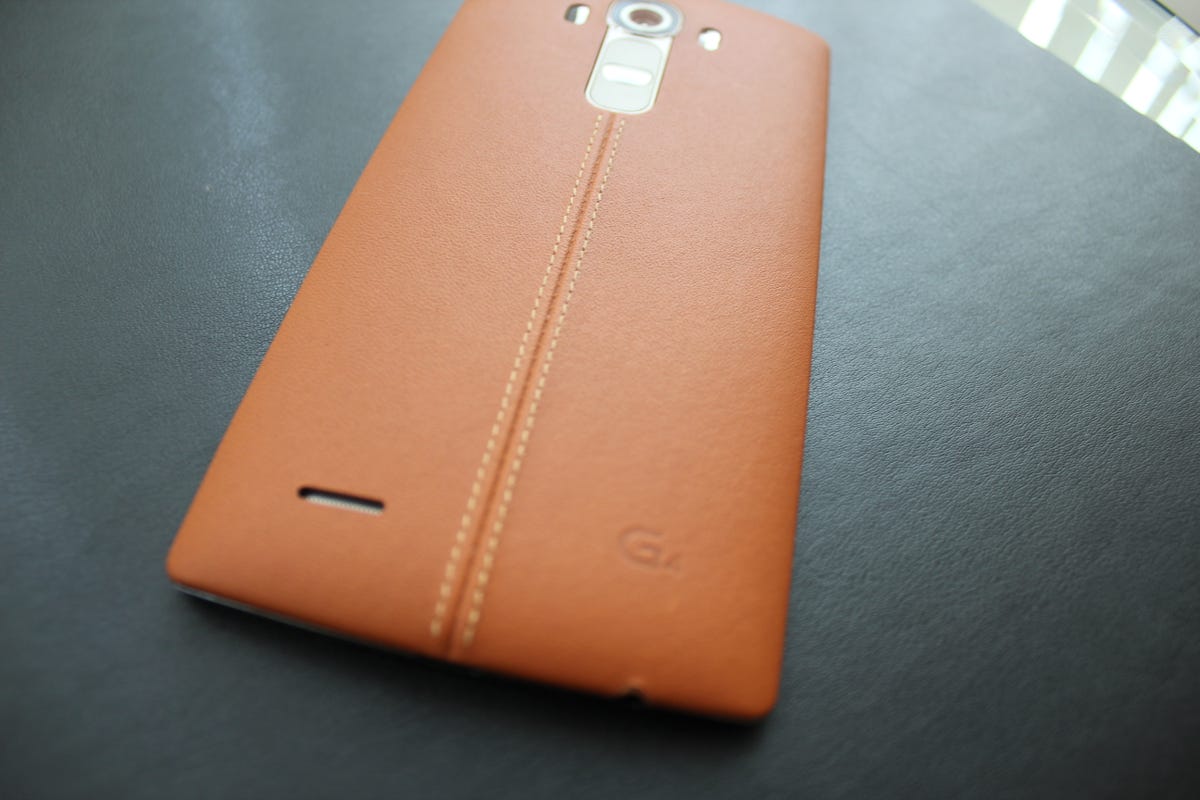

Roger Cheng/CNET
LG is also outgunned when it comes to resources — it ended last year with a little more than $2 billion in cash, while Samsung ended 2014 with a war chest of nearly $16 billion and Apple with nearly $195 billion.
“The G3 was a pretty good phone and did significantly better than folks expected,” said Soumen Ganguly, a consultant for Altman Vilandrie & Co. “But LG will need to follow up with a solid G4 and step up its marketing muscle to make a more significant dent in the US market.”
The G4 goes on sale in the coming weeks and is expected to be priced similar to the G3, or around $200 with a two-year contract and $600 without a contract. LG believes it will stand out from the crowd of me-too smartphones powered by Google’s Android mobile operating system software.
“We like to make it very personalized,” said Jung Hoon Lee, director in charge of the look of the G4. “The phone is not just a product, it’s a life companion.”
Building an identity
I was among the first outsiders to see the G4 in production at the Pyeongtaek assembly plant, during a visit in mid-April. The facility is just a small part of the 640,000 square-meter LG Digital Park, an area roughly the size of Disneyland. It houses 10,000 employees, all working on mobile, television and in-dash automotive components.
It’s two weeks before the G4’s unveiling, so many of the lines are devoted to producing the smartphone. The group goal for the day was nearly 15,000 units, and the line I walked had already produced 1,106 units within the first three hours. It takes 20 minutes for one smartphone to run through the process.
Inside the factory that builds the LG G4 smartphone (pictures)






+2 more
Below the assembly facility on a separate floor is an area devoted to quality assurance, where smartphones undergo torture tests simulating the rigors of everyday use. There are hundreds of test machines on the floor, poking, dropping and splashing liquid on various LG devices.
Later that day, I returned to Seoul to LG’s mobile offices in the Gasan district for a conversation with Ramchan Woo, the vice president in charge of the G4.
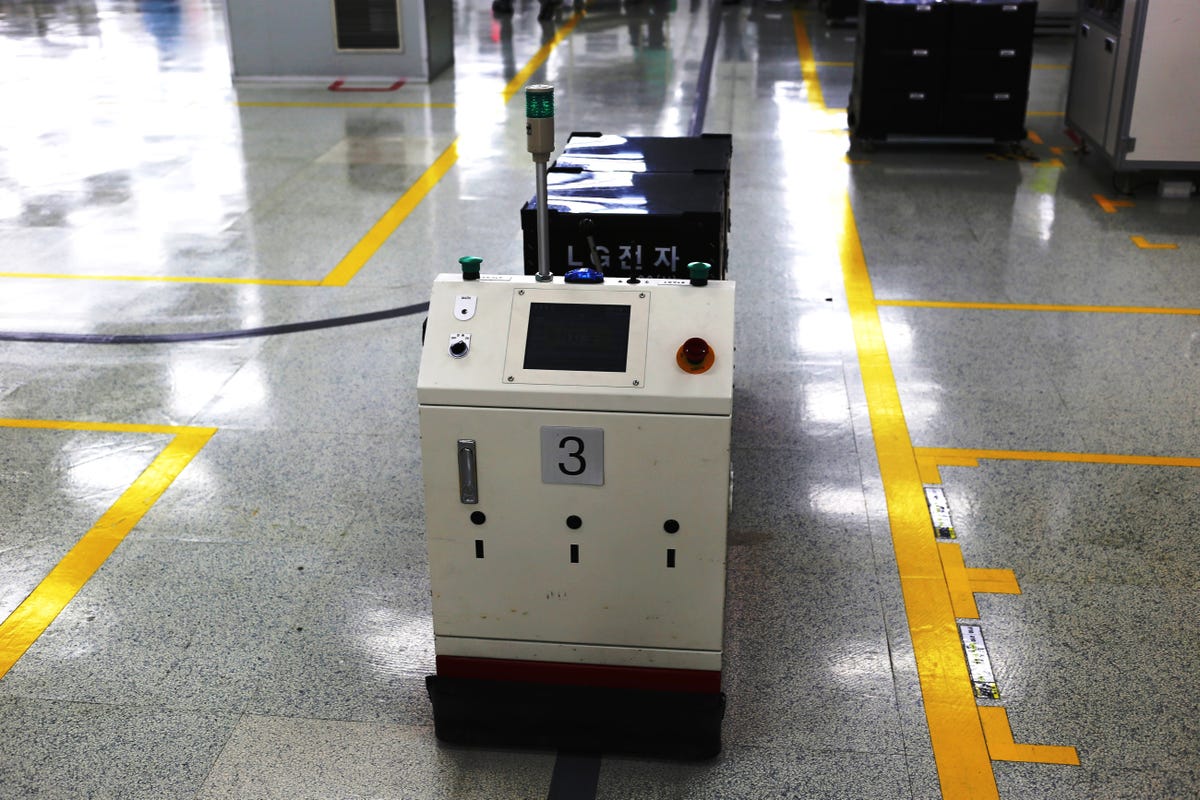

LG
Woo started working on the G4 more than a year ago, a few months before the launch of the G3. He opted to focus on just a few key features, employing leather as a material and improving the camera and display, rather than trying a radical new design. The G4 also incorporates a slight curve, taking its inspiration from LG’s G Flex line of smartphones, which offers a curved display that conforms to the contours of your face. The G4 has a subtler curve.
Rival smartphone maker HTC made few dramatic changes to its latest One M9 smartphone in an effort to create a consistent look to its products, and LG is taking a similar approach with the G4 to maintain the core identity of the G line of smartphones “We’re still building up the brand,” Woo said.
Leather is the new metal?
Employees from LG’s mechanical technologies division have been working with leather for two and a half years. Some designers even visited factories to learn the different processes for tanning the leather.
While early prototypes of the G4 incorporated metal, wood and even fabric, Woo decided on leather after engineers figured out how to mass-produce the material to serve as the backing of the G4. He sees it as a counterpoint to the recent trend toward metal.
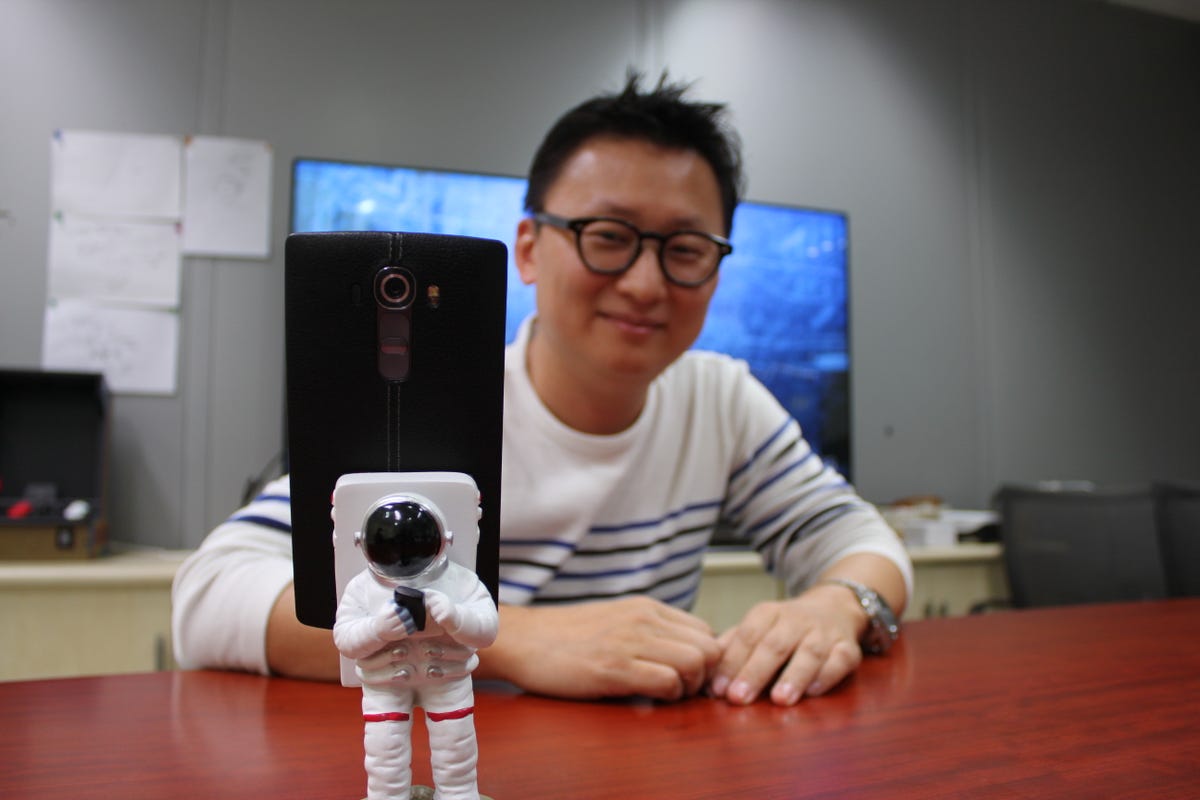

Roger Cheng/CNET
“When you look at the iPhone, it’s a very well-made machine,” Woo said. “But we like to make something very warm — something similar to fashion.”
LG’s process of cutting and tanning the leather is exactly the same method used on luxury bags, although the company adds a special coating at the end that makes its more resistant to water, dust and minor scratches. It takes LG three months to get the leather ready for its phones. The process, known as vegetable tanning in which a hide is lathered with plant materials high in tannin such as tree barks, allows the G4’s back to age and change over time with exposure to the oils in your skins and molecules in the air.
“It’s almost like a fingerprint — it’s a very attractive point,” Lee said.
LG isn’t the first to incorporate leather into its smartphones. Motorola Mobility offers leather as a premium option to its Moto X, and it too uses a vegetable tanning process for the back of the phone. But no other company has attempted to mass-produce so many smartphones with leather at once.
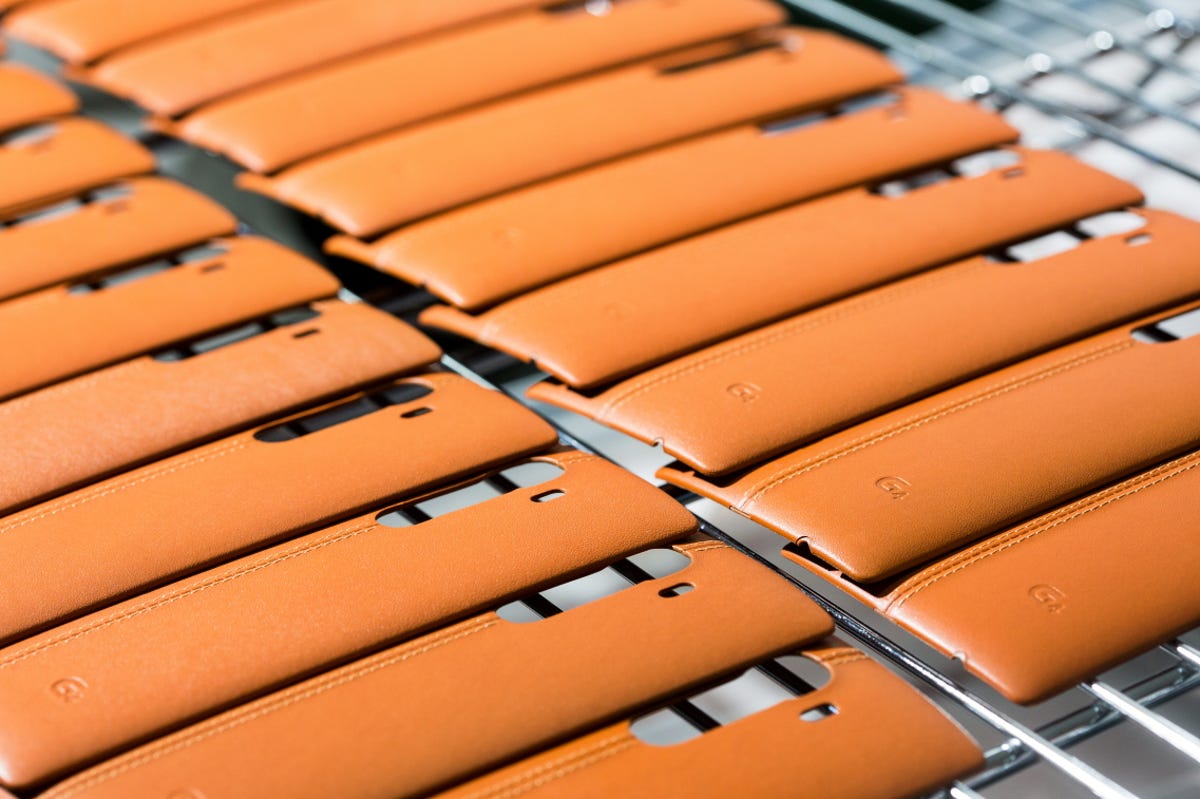

LG
It’s unclear whether consumers will gravitate toward leather as they have toward metal and glass. Earlier LG smartphones used glass, but Woo said customer feedback was negative. Metal, meanwhile, can wreck havoc with radio signals and tends to get hot. With so many companies employing metal into their smartphones, Woo decided LG needed to find a new material that would give it a market advantage. “Our answer to metal is leather for making the product more premium,” he said.
While Samsung and Apple have chosen to offer their smartphone with no removable battery or expandable memory card, the G4 keeps both attributes — something Woo expects LG will loudly trumpet.
A closer look at LG’s embrace of leather (pictures)






+2 more
Showing its true colors
Right after the G3 launched, LG’s mobile team went to its sister company, LG Innotek, to work on a better camera module. LG Innotek is best known for supplying the camera module for Apple’s iPhone.
Though the G3 camera won praise, it suffered from the common camera phone problem of being unable to work well in poor light or indoors. Woo started the process of creating a new camera by asking a single question: what do I need in my smartphone camera to fully replace my digital SLR camera?


Roger Cheng/CNET
The LG team came up with a F/1.8 aperture lens, which promises to capture more light even in dark settings and deliver sharper, more detailed nighttime photos. The company also improved the optical image stabilization, a feature that keeps the camera steady if your hands shake while holding the phone. LG added a second degree of stabilization. (All other smartphone OIS systems use one degree of stabilization.)
It also bumped up the camera resolution to a 16-megapixel camera from the G3’s 13 MP shooter, even as it improved the front-facing camera to 8 MP from 2 MP.
One of the early tensions between the design and engineering team stemmed from an early prototype of the camera module, which was too deep to fit into the body of the smartphone. The result was an awkward bump in the back. “It was like a belly button,” said Ji Youn Lheem, chief strategic designer for the G4.
The designers pushed the camera team to shave millimeters off the module. They succeeded, finally getting it flush with the rear button controls on the G4. “We poured more effort and time into the camera,” said Namsu Lee, who was in charge of the G4 camera.
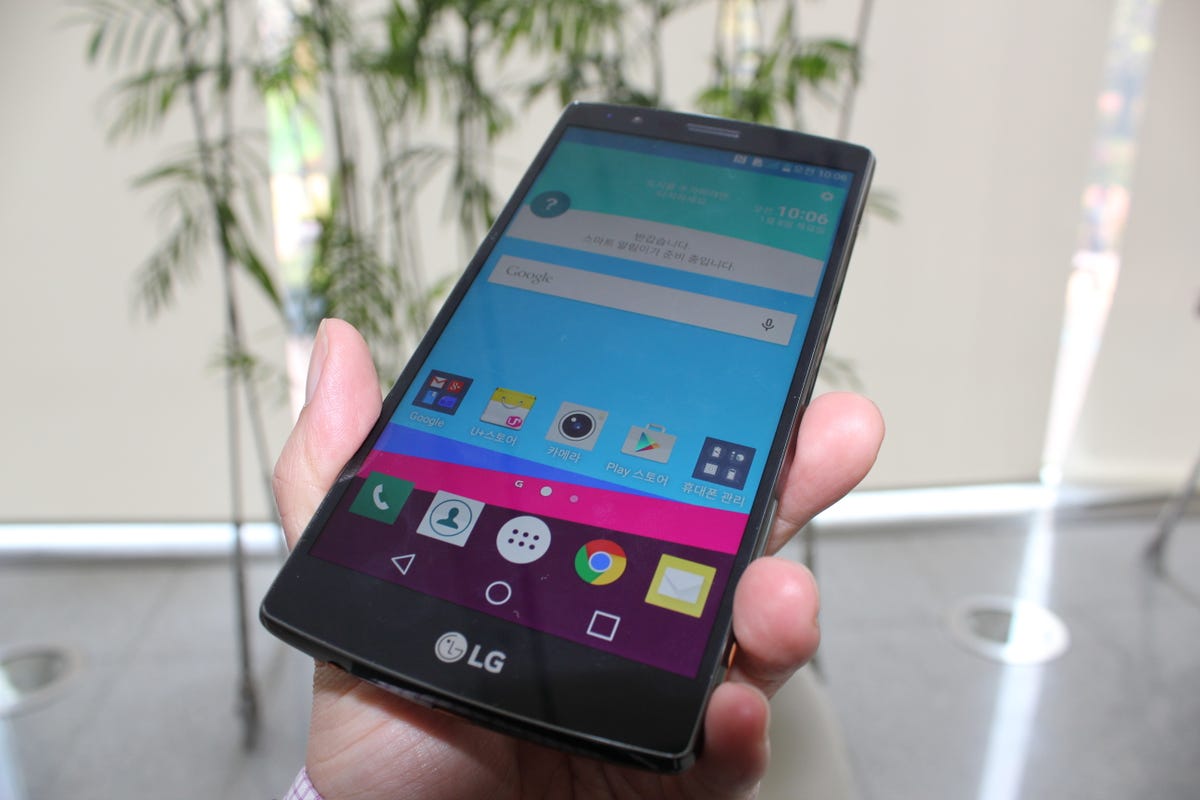

Roger Cheng/CNET
The highlight feature for the new camera, however, is the addition of a color scanner, which surveys the environment and visual spectrum to capture the most accurate colors. The scanner uses satellite image-recognition technology to figure out what the objects are so it can then determine the most appropriate colors.
“It sounds kind of crazy, and it is kind of crazy,” Woo said, boasting that it was a first in the smartphone and camera fields.
That color accuracy is important because the biggest change in the G4’s LCD quad high-definition display is its ability to present more accurate colors on the screen. I was skeptical about the difference until Woo showed me an image of a bright red flower on the G3 and iPhone 6 Plus. He then showed me the same image on the G4 — the red from the two previous phones looked orange. Woo boasted that it’s the “perfect display.”
That makes the G4 display able to meet 98 percent of a Hollywood visual color standard called the Digital Cinema Initiative, Woo said. The iPhone 6 Plus, which Woo said is likely the best alternative in the market, hits 80 percent of the standard, according to Woo.
Apple wasn’t available to comment.
“It’s totally different than any other display on the planet,” Woo said.
A friendlier G4
LG has also been working over the years to improve its user interface, largely by eliminating its own custom applications and relying more on Android experiences. The G4 is no different — LG worked with Google to ensure apps like the Chrome browser are front and center.
For its latest user experience, LG opted to reduce the amount of screens filled with preloaded apps and offer a “Smart Bulletin” page on the phone where users can load their widgets, the small apps that remain on the screen and provide real-time information like weather updates and stock prices.


Roger Cheng/CNET
JinHae Choi, director of LG’s user experience or UX Lab, sees the Smart Bulletin as a potential tool for controlling connected devices like smart light bulbs and appliances down the line.
The feature is part of a push to deliver a friendlier, more helpful G4, which the company hopes will help less technically savvy users navigate through the minutia of the Android operating system.
Whether any of these improvements matter is still up in the air. LG’s G3 success still lags far behind that of Apple or even Samsung — which had a down year in 2014. Analysts believe LG needs to pour more resources into marketing to raise its profile with customers if it wants to compete with the iPhone and Galaxy S franchises.
With the G4, the company is opting to zig while others zag toward metal. LG hopes the personal touch will allow it to stand out. “We wanted to make something soft, warm, that people wanted to touch, and not only look at,” Lee said.
The question is will it be also something they want to buy.



